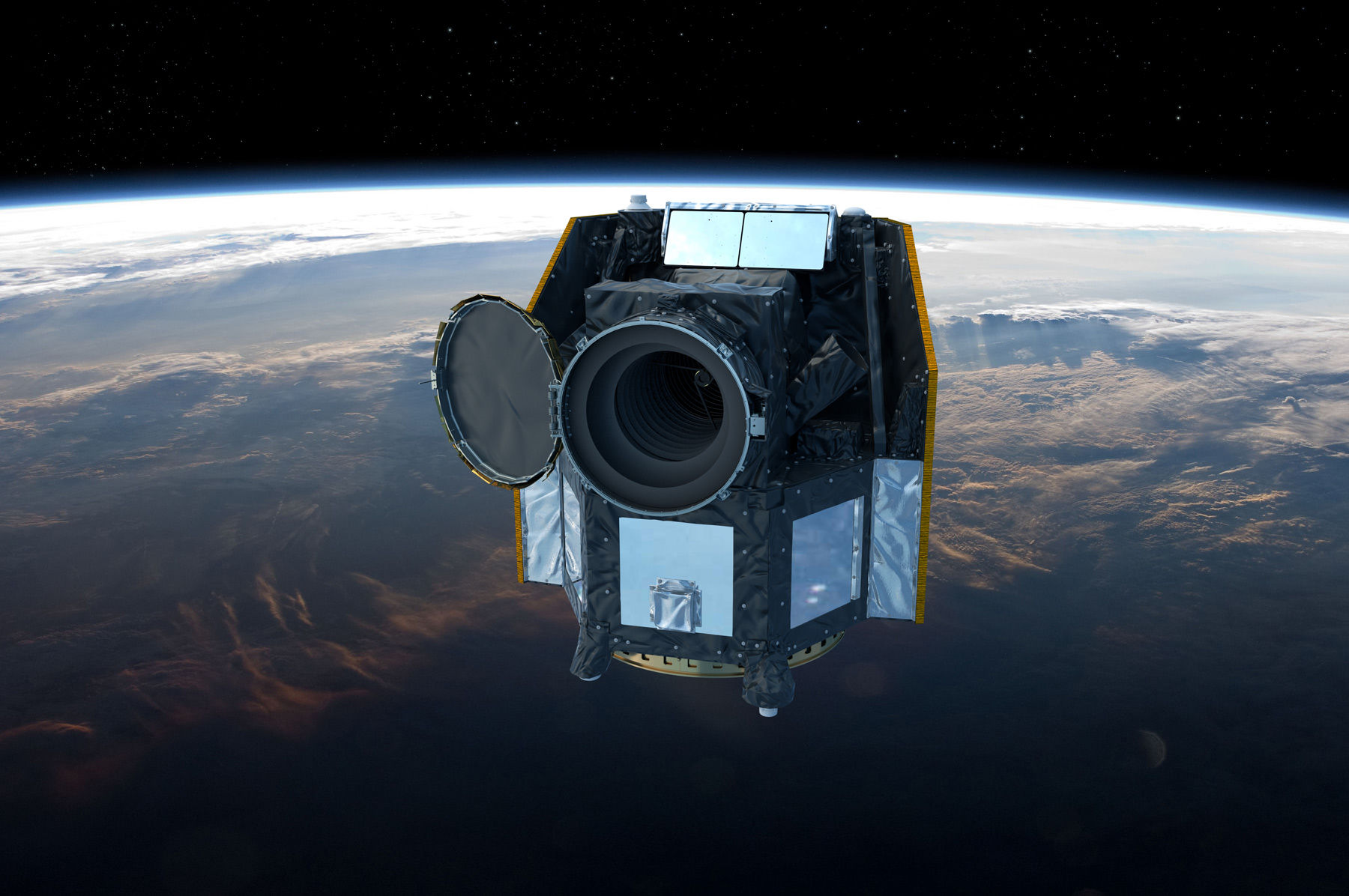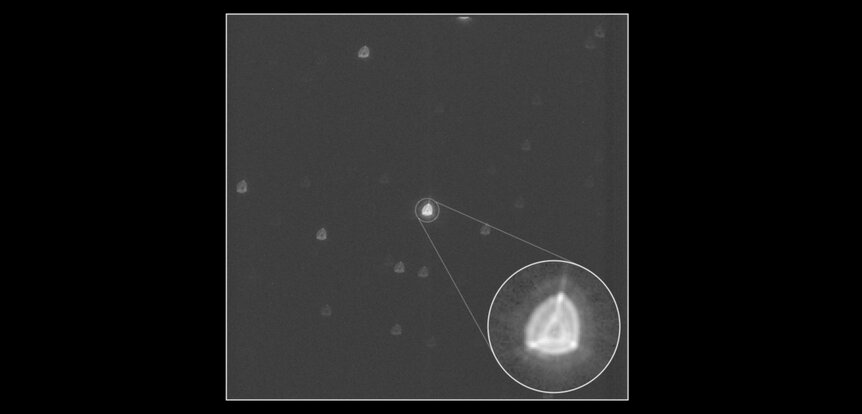Create a free profile to get unlimited access to exclusive videos, sweepstakes, and more!
First light for the exoplanet hunter mission CHEOPS goes tetrahedral

Sometimes, the puns are just handed to you.
CHEOPS is a European Space Agency exoplanet hunting mission — the CHaracterising ExOPlanet Satellite*. It will look at bright stars already known to host exoplanets, taking extremely accurate measurements of their brightness over time.
If the planet's orbit is seen edge-on from Earth, it will appear to pass directly in front of the star’s face — this is called a transit — and it will block a tiny fraction of the star’s light. The amount blocked depends on the size of the planet itself, so by measuring the dip in starlight, the planet’s radius can be found.
The cool thing here is that the planets chosen already have a mass measured for them; that was done previously from the ground using the reflex velocity method. As the planet orbits the star in a big circle (or ellipse), its gravity tugs on the star so the star makes a small circle (or ellipse). This can be detected using the Doppler shift of the star’s light, and depends on the mass of the planet.
So, by targeting these planets specifically, CHEOPS gets their size, and when combined with the mass, you can get the density of the planet. That’s a big deal! Iron is denser than rock, which is denser than water, which in turn is denser than air. So knowing the overall density of the planet can tell you a lot about it, especially given its size.
CHEOPS launched on 18 December, 2019, and on 07 February, 2020, it took its very first image of a star! The target chosen was HD 70843, a star about 155 light years away that’s a little bit hotter and brighter than the Sun.
The image, traditionally called First Light by astronomers, is itself … surprising.
When I first saw this, I thought, “It’s out of focus!” My second thought was, “That’s OK, that happens a lot with space-based telescopes; they’ll focus it over time.” It turns out my first thought was correct but my second one was wrong. It’s out of focus on purpose. Pixels in a detector are notorious jerks, with some more sensitive to light than others. If your star image is very small, that can make getting an accurate measurement of its brightness more difficult. Also, if the starlight only falls on a handful of pixels, a small drift in the pointing can change the brightness you see in each pixel as the image drifts across them. So de-focus-ing the image makes the star fall on a lot of pixels, minimizing these problems. Clever.
But then my third thought was, “Ooooo, the PSF is a triangle!” That stands for point spread function, a fancy astronomy term for the shape of a star in an image. Stars are typically points, too small and far away to resolve as disks. The optics of the telescope spreads the light out due to a process called diffraction: waves of light bend around structures in the telescope in the same way as waves of water bend around an obstacle in their path. That spreads the light out in a way that can be described mathematically; hence point spread function.
That’s also why you see spikes coming out from stars in lots of images — there are metal vanes holding one of the mirrors in place, and that spreads the light out into diffraction spikes. In many ‘scopes there are four vanes, 90° apart around the mirror, but CHEOPS has three at 120° angles, and that’s why the PSF is so odd looking here, more like a triangle.
But then I had my fourth thought.
“OMG. They look like little pyramids!”
Pyramids. In a mission called CHEOPS.
This makes me wonder what other systems follow this theme. Are the observations Cairo-stabilized? How much ramses do the onboard chips have? Will this work in tandem with OSIRIS-REx?
Snark aside, this is a pretty exciting mission. It’s like TESS, but instead of looking at stars by sweeping over the entire sky, CHEOPS is pointed, looking at a select set of stars. It should be extremely accurate, allowing astronomers to do quite a bit more than just get the sizes of the transiting planets. It will also look at the effects of atmospheres around the planets, see possible exomoons and rings (!!), and hopefully find transiting planets that haven’t been seen to transit before.
And all this is being done on the cheap — the mission cost cap was €50 million — and with a small satellite. It’s only about 1.5 meters on a side, and the ‘scope has a mass of 58 kilograms! That’s less than what I weigh (the entire spacecraft wet mass (which means including fuel) is about 280 kg). The detector is 1024 x 1024 pixels, and the telescope mirror is a mere 32 centimeters across! It doesn’t need to be huge because it’s looking at nearby, bright stars, and in space the sky background is darker, allowing for more contrast and more accurate measurements.
So congratulations to the CHEOPS team on First Light, and may this mission allow us to understand our galactic neighbors even better.
*I have to admit, I’m not a fan of choosing letting buried inside words to acronymize your mission name. It’s getting more popular, and I think it’s cheating a little — technically, it’s not even an acronym, since that’s supposed to take the first letters of the words to make a short, pronounceable version. If you want to have a fun name, great, but at least just throw random semi-made-up Latin words in the name to get the acronym you want, like Characterizing Heliopropic Exoplanets and Observing Planetary Specifics.




























